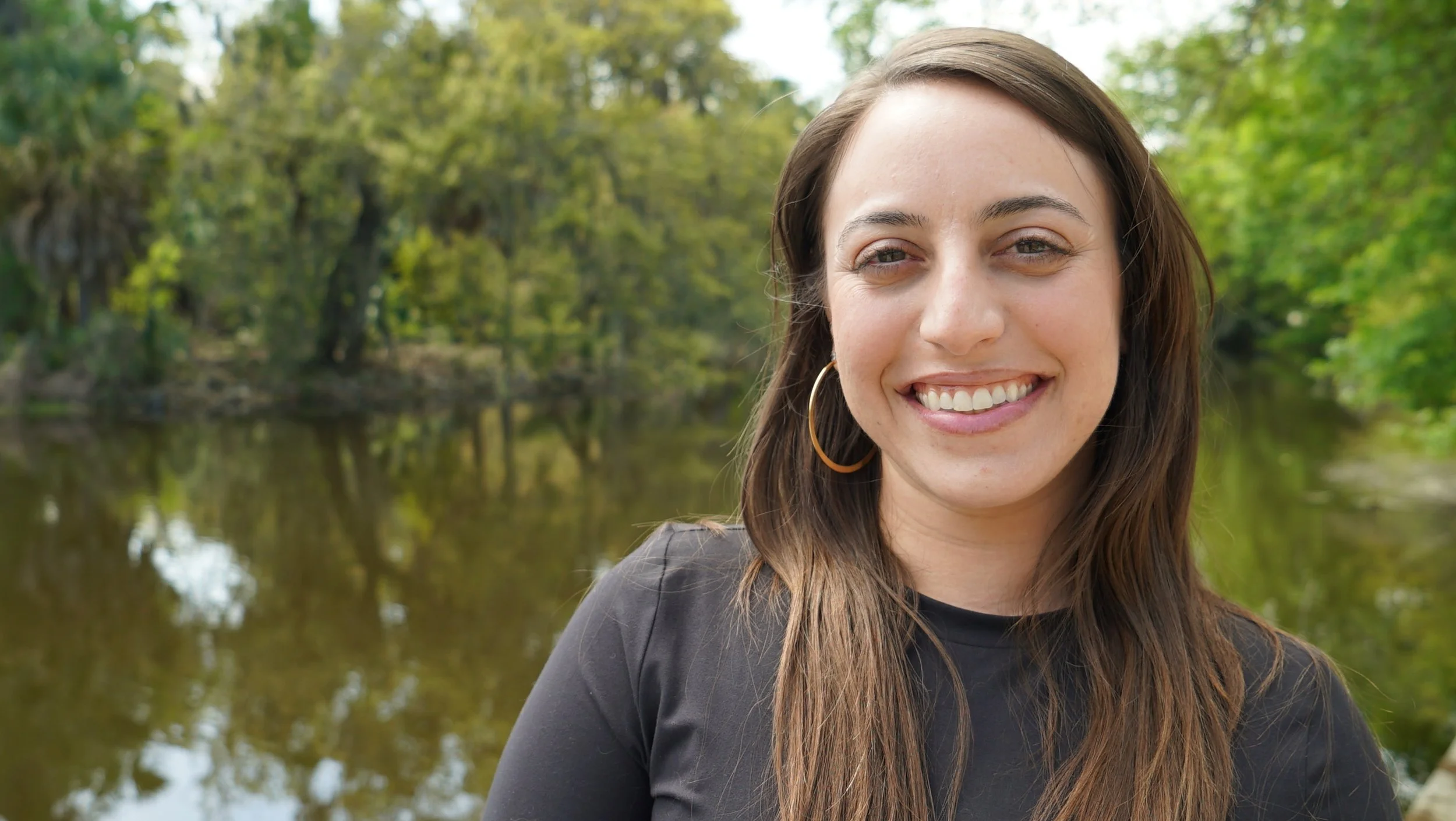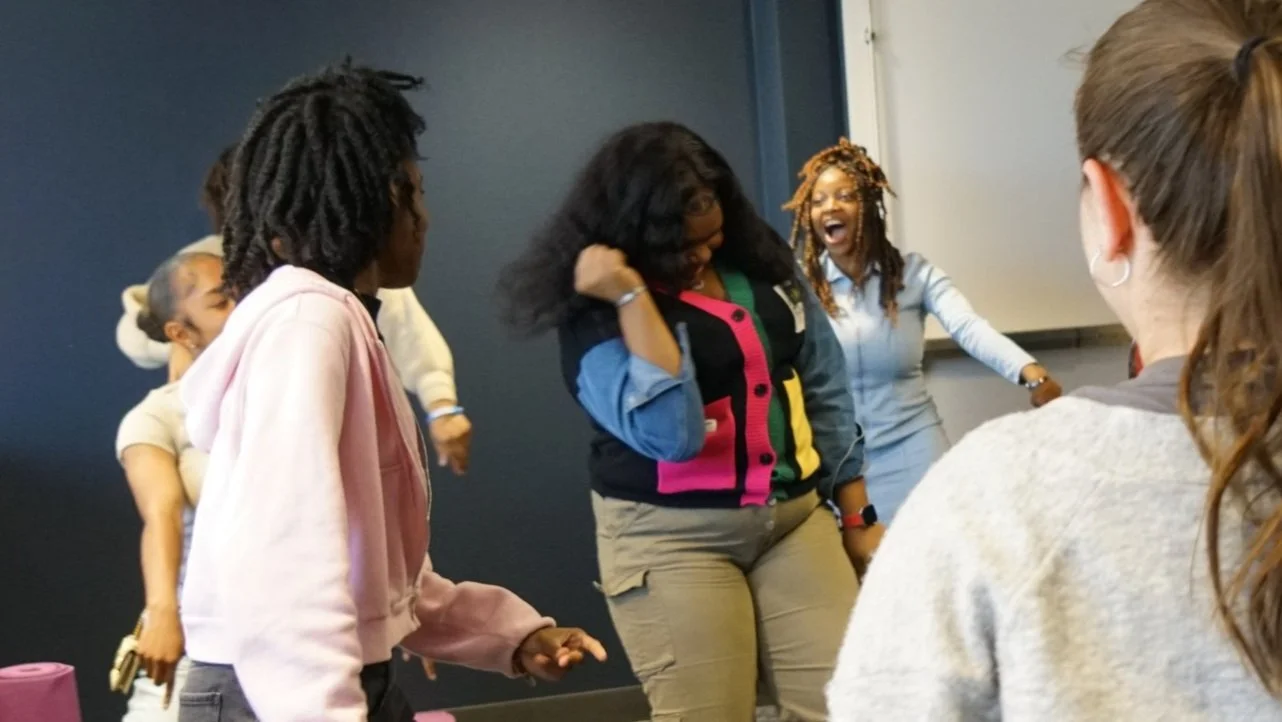Bounce Back Pilot
“I felt relaxed when we did yoga. It really calmed me down and gave me peace of mind!”
Bounce Back is back! In our last newsletter, you may have read about our Champions NOLA initiative and how we are expanding on our arts as medicine programming by developing a curriculum that infuses art and movement into mental health lessons and activities. Champions NOLA was rooted in previous programming we have been conducting over the past few years from our reACTion portfolio, specifically an initiative called Bounce Back that was designed to explore the healing power of creative spaces. Through our reflections as we were building out Champions NOLA, we decided to bounce back (I know, we had to do it!) to our previous title and return to the name Bounce Back, because this title perfectly encapsulates the energy and purpose of this initiative. As a reminder of what we did with that project, in 2023, as one of fourteen finalists in the Department of Health and Human Services’ (HHS) Children and Youth Resilience Challenge, we created Bounce Back to showcase the potential of an innovative, community-led initiative to advance children and youth mental health (see the video below!). Using that work as our base, we’ve spent months planning, adapting, piloting, iterating, and applying feedback, and Bounce Back continues to evolve into a new form, a unique and novel mental health and arts curriculum for school-aged children. If you’re curious to see what the original curriculum and implementation were like, follow the link below to watch a video recap of the Bounce Back programming that we presented to other finalists and staff at HHS in 2024!
As a social worker, professional dance performer, and dance educator, bringing this curriculum to life through our one week pilot at Abramson Sci Academy was a fulfilling, gratifying, and rewarding experience to contribute to and to be a part of. I’ve had the privilege of witnessing the potential of art to change lives through its power to create community, facilitate expression, enhance self-efficacy, and spark joy. I’ve also witnessed how powerful it can be to educate youth about mental health, taking it from an elusive concept to an aspect of life that they can easily grasp and explore. This is what makes the Bounce Back curriculum powerful and unique; it combines the arts with mental health in an accessible, engaging, and affirming way. As one teen exclaimed,
“I love this and I wish it would've come sooner so I could partake in this special moment again!”
Getting to the pilot week took intentional planning. We started building the curriculum first, revising our previously crafted mental health lessons and incorporating feedback from our Youth Advisory Board on which topics to prioritize. After fusing creative elements into our core mental health topics, we consulted with professional artists to provide feedback on the arts-based activities and creative components that tied into the lessons. Next, we held a teachback in March with our Youth Advisory Board, where staff were able to test out the lessons and practice their implementation skills. The teachback was critical to provide insight on what may or may not resonate with youth, what could be improved upon, and where we might expand, reorder, or change facilitation tactics. The final product was a curriculum designed around the four core elements listed below which promotes a better understanding of foundational mental health topics and concepts that are important for youth to know. Each day the information builds upon, reinforces, and complements what youth learned previously, and it breaks down complex health concepts through strategically designed activities and frameworks. The aforementioned core elements are as follows:
foundations of mental health and connecting thoughts, feelings, and actions
developmental needs at different stages of childhood and the impact those needs have on mental health
stress and trauma and their connection to the body
pathways for building a legacy for well-being
By April we were finally ready to implement the curriculum, and we are very grateful to Abramson Sci Academy and their music and marching band programs for allowing us to implement on campus in New Orleans East with their youth. From Monday, April 14 to Thursday, April 17, my co-worker Jemila Dunham and I co-facilitated the curriculum for an hour and a half each afternoon, and we were joined by our CHC Social Work Intern Sarah Oleisky, who served as a liaison with the school and students, and our Sr. Director of Media & Communications Iman Shervington, who filmed, recorded, and photographed the pilot for documentation and promotional purposes. One of the special components of the implementation — and a very special experience that we were excited to facilitate for the youth participants — was the ability to work with professional guest artists that could help bring the mental health concepts to life. Our special guests included poet Akilah Toney, dancer Chanice Holmes, sound healer Lauren Fuller, and songwriter Jaime Woods; they each led participants in a wide range of dynamic and diverse artistic activities that enhanced the youth’s learning. Their presence captivated, inspired, and motivated participants to engage with their creativity, try out different things, and broaden their artistic skills. The youth expressed a lot of gratitude and appreciation for this element of the programming, with one person sharing that:
“This was the best workshop ever. I would love to do it all over. The songwriting was the best for me.”
Another participant stated that they
“…always felt confident during the workshops, especially when doing the activities.”
In general the youth participants were very receptive to the program as a whole and what it was teaching them, with one youth stating,
“I felt good about learning how to control stress.”
Another participant felt the need for this kind of programming in additional places across the city and stated,
“I think it should be an activity at a lot of schools.”
For a recap of what this process was like, follow the button below to check out our Instagram Reel showcasing highlights from all four days!
Seeing the youth participate in the art-based activities and watching the guest artists bring the concepts of the mental health lessons to life in such intentional and caring ways really solidified what youth previously identified is at the heart of Bounce Back programming: a community harnessing creativity and culture to move toward a truer self. For me, this pilot really cemented the significance of this concept because tapping into our more authentic selves enhances our natural ability to rebound and thrive despite life’s challenges and struggles, which feels so pertinent and salient today. I believe in this curriculum and its potential to positively impact all who experience it and participate in it. It supports and lifts up our inherent capacities to bounce back, and it sets a tone of community instead of isolation as it helps us learn about our mental health needs together, see how we can support one another, and find pathways to building a legacy of well-being for all.
Blog post written by IWES Program Associate Brieze Levy, LMSW. Click here to learn more about Bounce Back.
“I felt inspired when we had our special guest Akilah reading her poems that she personally wrote!”



